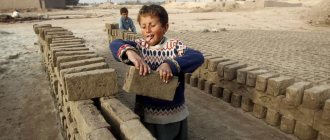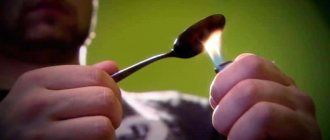How the industry collapsed
Hemp can be sown throughout almost the entire territory of Russia; it is the most highly profitable crop. More than thirty thousand types of products can be made from it, including fiber, fabric, plastic, paper, oil, and the legendary Henry Ford once even managed to make a car body consisting of 70% hemp cellulose. Clothing made from hemp has excellent wear resistance, keeps you cool in the summer and warm in the winter thanks to the porous fiber. Moreover, when growing hemp, practically no pesticides or herbicides are used, due to which the raw materials can be called environmentally friendly.
Hemp is an excellent source of cellulose. From straw collected from a hectare of fiber flax, you can get 10-20 centners of cellulose, from rapeseed straw from the same area - 20-40 centners, and from hemp - 70-100 centners!
Hemp contains a large amount of fatty acids that are beneficial to human health. The elements it contains help with Parkinson's and Alzheimer's diseases, schizophrenia, epilepsy, multiple sclerosis and generally support the endogenous system.
The question arises: why, with such a promising crop, the area under it does not exceed 10 thousand hectares, and why can we count hemp growers in our country on one hand? – Once upon a time, hemp growing in our country was considered one of the most prestigious professions, and in 1928 the crop area occupied 1 million hectares. More than 80% of hemp production belonged to the USSR. A good reminder of this is the “Friendship of Peoples” fountain at VDNKh in Moscow: 16 bronze women, personifying 16 Soviet republics, surround a red granite sheaf of three main crops - wheat, sunflower and industrial hemp. Hemp success, however, came to our country back in the time of Peter I. Then, at the beginning of the 18th century, we established hemp production and were leaders in exports. However, in 1961, the UN adopted the International Convention on Narcotic Drugs and industrial hemp was equated to marijuana. Two years later, Nikita Khrushchev ratified this convention, and hemp was outlawed. This has led to the fact that we practically do not have our own fiber: the need for hemp is 700 thousand tons, of which we buy 300 thousand abroad,” complains Tatyana Sukhorada.
The main problem with hemp cultivation is the content of tetrahydrocannabinol in the culture. It is a cannabionoid that is a narcotic and is used to make marijuana. Because of him, hemp was banned at the UN. In fact, scientists explain that in order for hemp to be used for narcotic purposes, the THC content must exceed 10%. Russian hemp has never shown such concentration. In the south the content was around 2%, in the middle zone - about 1% due to the coolness. Now only 0.1% is legally permissible, and scientists are trying, out of harm’s way, to reduce this figure to 0.01-0.02%. Every year, Drug Enforcement Administration officers come to the breeders' fields and test the hemp for THC content.
Before sowing, we inform law enforcement agencies of the coordinates and field number,” says Tatyana Sukhorada. “They, in turn, can come at any time to check what has been sown there and take the sample for analysis to the Ministry of Internal Affairs laboratory.
Low THC levels have created another problem: the crop is unable to fight pests on its own. It is necessary to use pesticides, and this reduces the ecological purity of the crop.
Transfer
When transplanting, you need to expose the roots to light as little as possible. The operation must be performed quickly, in a dark place, without bright lighting. Light, if it hits the roots, will cause them great harm in the form of severe stress.
How to properly replant hemp step by step:
- You need to wash your hands and ideally wear gloves. This will not only protect your hands from dirt, but also prevent infectious diseases from reaching the plants.
- Carefully separate the lump of earth with the plant from the old pot. You can knock on the walls a little so that the lump separates easily.
- Wrap your middle and ring fingers around the stem of the plant, placing your palm on the surface of the soil.
- Next, you need to turn the pot over and, holding the plant, remove the earthen lump. If you can’t do this the first time, you can lightly tap the bottom of the pot.
- Hold the extracted earthen lump with both hands, quickly turn it over and place it in a new, prepared pot.
- Cover the plant with new soil, lightly spraying it with water from a spray bottle.
Cannabis varieties
Depending on the purpose of use, the farmer can choose a crop to obtain fiber or to obtain oil. Today, there are 6 varieties in the State Register of Breeding Achievements: Zenitsa, Ekaterinodarskaya, Victoria, Kubanka - for fibrous use, and Omegadar-1, Maria - for oilseed use. The growing season varies from 116 to 145 days. The most productive seed variety is Maria (8.2 c/ha). On the stem, late-ripening varieties Victoria and Ekaterinodarskaya (174.6-176.0 c/ha). The number of generations of reproductive hemp seeds is limited - until the third reproduction, since scientists have noted a slight increase in THC (an increase of 0.03% over three years in crops of lower reproductions). The hemp harvest largely depends on the quality of the seeds. When sowing with incomplete seeds, the hemp yield can be reduced by 25 percent or more. Therefore, for sowing it is necessary to use well-ripened seeds, brought to sowing conditions (Germination rate 90%, varietal purity 99-99.5%), i.e. corresponding to GOST R 52325-2005.
Instead of a preface
Among hemp growers, there are increasingly enthusiasts who want to cultivate hemp indoors. Growing your own weed isn't easy. It will take a lot of effort and time. Using the material presented below, you can save valuable hours, significantly increase the productivity of your own grove, and control the development process. All hemp growers seeking to achieve maximum yield can be divided into three conditional categories:
- those who want to get the maximum amount of staff at any cost, based on limited space;
- those who evaluate expenses, strive to maximize benefits, and are not limited in the availability of area for sowing;
- Growers who just want to achieve great results in the form of massive buds.
This material is perfect for all three areas. Whatever your goal, read the answers below.
Soil requirements
Hemp places high demands on soil. Scientists believe that fertile, humus, moisture-rich soils with a neutral or slightly alkaline reaction (pH = 7.1-7.4), light and medium in mechanical composition are best suited for cultivation. It is a mistake to sow hemp for a long time in the same field. Continuous sowing has a bad effect on the condition of the soil and the development of plants. This contributes to the depletion of soil in terms of nutrients and moisture (Hemp consumes moisture to build a unit of dry mass twice as much as oats and wheat, and three times more than millet; hemp transpiration coefficient depending on the variety, growing conditions, water and nutritional regimes range from 300 to 1200).
Number of plants
The number of plants should correspond to the available growing area. Comparing situations with a larger and smaller number of plants, it is the second option that allows you to achieve great results.
The number of bushes affects the final yield in two ways:
Bet on quantity - many compact bushes allow you to fill all available space extremely quickly, increasing the final yield for the calendar year. The key to getting more harvests is the SOG technique.
The focus is on quality - a smaller number of plants will require more time for the vegetative phase, because they will grow to impressive sizes. There will be fewer harvests per year, but it is relatively simple to compensate for the final mass of the collected stuff, through special training methods, such as manifolding, which involves forcing the bush to branch.
The photo shows a lot of marijuana seedlings in single pots.
Tillage
For basic soil cultivation for hemp, scientists recommend two options. If the predecessor was winter or spring grain crops, then after disc hulling when weeds grow, deep tillage of the soil without turning the layer is possible using heavy cultivators, chisel plows to a depth of 30 cm and flat cutters. If the predecessors were tall crops (corn, etc.) or sugar beets, then in this case, after disc hulling, deep plowing to a depth of 30 cm with a plow with skimmers is preferable.
Vegetable area and watering areas
You can place about 1-2 glasses in one area. Then fill a bucket or container of appropriate size with the nutrient mixture. An ordinary waterer is a good option for evenly soaking all glasses or pots. For larger procedures, a pump or device with a hose may be needed.
If the area is to be grown and all the pots are clean, then any root of the solution can be applied repeatedly until the soil reaches the point of complete saturation. For the saturation point, you can use a regular Asian chopstick to poke a hole, the depth of which will be the length of the root of the sprout, in the center of the pot. Add a nutrient solution to each hole to saturate the substrate and prepare it for sprouting.
Take one sprout from the paper towel, handle it gently by the stem just below the top of the sprout, and insert it into the hole in the soil. Carefully insert the tip of the root deep into the hole, using chopsticks if necessary.
Once the sprout is placed in the hole, the hole and top are tamped as close to ground level as possible, the soil can be just as gently compacted around the stem of the sprout to hold it firmly in place.
Hemp fertilizer
According to breeders, southern hemp consumes large amounts of nutrients from the soil. To obtain 100 centners of biomass from 1 hectare, 150 kg of nitrogen, 70 kg of phosphorus, and 150-200 kg of potassium are required. per hectare This indicates the increased demands of hemp on soil fertility. Breeders believe that cultivating hemp without the use of fertilizers is undesirable, since not only the yield is reduced, but also the quality of hemp products. Organic, phosphorus, potassium and ammonia forms of nitrogen fertilizers must be applied during autumn plowing, and nitrate forms of nitrogen fertilizers must be applied in the spring during pre-sowing cultivation. Spring feeding of hemp in the phase of formation of 2-3 pairs of leaves at the rate of 25-30 kg is effective. d.v. nitrogen and 20-25 kg. phosphorus and potassium fertilizers per hectare. Fertilizers are incorporated into the rows using a plant feeder cultivator at a distance of 18-20 cm from the row.
Strain selection
Before you start growing, you should make the right choice in favor of high-yielding genetics. It is by choosing the right variety of cannabis that the botanist makes significant positive preconditions for harvesting a really cool harvest.
By focusing on planning the grove, fertilizing, the cultivation techniques used and environmental conditions, growers forget about the importance of successful selection of seed material. The colossal influence of this factor is difficult to overestimate. By creating the same conditions for different plants, you will certainly get a different amount of dry buds.
In the photo on the left, LA Confidential brought in about 170 grams, and on the right, Liberty Haze brought in 285 grams. Both plants received the same conditions.
Please note that when illuminated at 600 W HPS, the flowering buds become lighter.
To add a little confusion, let us clarify that each variety “works” in different lighting, cultivation conditions and other factors.
Sowing time
Southern hemp is an early sowing crop. Its seedlings tolerate short frosts down to -5 degrees Celsius. Lower temperatures negatively affect seedlings, growth and development of the crop, which leads to a decrease in yield. The advantage of early sowing of southern hemp has been proven in practice. This is due to the fact that hemp seeds fall into moist soil during early sowing. In the presence of heat and good aeration, they begin to grow. With earlier harvesting, it is possible to prepare the field for sowing winter wheat. The optimal time for sowing southern hemp is determined by warming the soil to 8-10 degrees at the seeding depth. Sowing hemp in a short time ensures the simultaneous emergence of seedlings, greater resistance of crops against damage by hemp fleas, and good growth and development of plants. When sowing is late, seeds fall into soil of uneven moisture content, often into an overdried layer, and sprout unevenly. In the absence of rain, full germination of such crops is delayed by 20–30 days and results in greater diversity in the growth and development of plants. Their layering complicates harvesting and leads to large losses of stems and seeds.
Let there be light
Lighting is an extremely important component for quality indoor cultivation. The lack of funds to purchase professional lighting equipment can be compensated by studying bulletin boards, where used lamps and reflectors are often sold. Grover's second-hand store should not be confusing; the lamps do not lose their properties over time.
Still expensive? Go to the nearest hardware store, more specifically, to the electrical goods department. The choice there is small, but it is possible to find a worthy replacement. It is quite possible that reflectors for sodium gas-discharge lamps (HSD) may not be available at all. A reflector made from sheets of tin or canisters is a budget replacement for special equipment.
Seeding rates, sowing methods, seed placement depth
To obtain high yields of stems and seeds, scientists recommend sowing southern hemp with row spacing of 45 cm and a seeding rate of 1.0-1.5 million seeds/ha or 20-30 kg/ha. Band sowing of 50+20 cm is possible with a seeding rate of 1.5-1.7 million seeds/ha or 30-35 kg/ha and row sowing of 15 cm with a seeding rate of 2.5-3.0 million seeds/ha or 50-60 kg per hectare. Row sowing is recommended on well-cultivated, weed-free fields. To obtain a high seed yield and increase the reproduction rate, the best are wide-row sowings with row spacing of 70 cm with reduced seeding rates of 0.5-0.7 million seeds/ha or (10-15 kg/ha). The seeding depth of dioecious hemp seeds is 4-5 cm, monoecious hemp is 3-4 cm. With a wide-row sowing method, it is best to sow with a TSM-8000 A pneumatic seeder. With a narrow-row method, sow grain SZ-3.6 or its analogues. Hemp crops respond positively to systematic loosening of row spacing. Soil aeration and air exchange for hemp plants are no less important than the supply of soil moisture, since oxygen is needed for roots to breathe.
Protection of crops from diseases, pests, weeds
To destroy weeds and improve the water-air regime of the soil, scientists recommend using two or three inter-row treatments. It is best to loosen three times to a variable depth (6-10 cm). Such loosening can provide an increase in seed yield by 20-25% and stem yield by 10-11%. – Weeds such as mice and chicken millet often appear in hemp crops in the Kranodar region. The herbicide Furore super works well against them: cereal weeds should be treated in the 3-5 leaf phase, advises Tatyana Suchorada. – Against ragwort we use Lontrel or Lontrel grand. The tank mixture Lontrel + Furore Super is also effective. The most common and dangerous pests of hemp are hemp flea beetle, stem borer, and hemp leaf roller.
“It is very important not to miss the destruction of the first generation of the pest, since when the second generation hatches - this happens in July - the height of the plants will not allow treatment by ground means, and the use of aviation is an expensive undertaking,” says Tatyana Sukhorada. – Seed losses from damage by hemp fleas can reach 50-80% in some years.
The hemp budworm in the southern hemp growing zone develops in three generations, the caterpillars of the first generation damage the leaves and stems, the second and third inflorescences and seeds. Seed yield losses can be 15-60%, and long fiber yield is reduced by 15-80%. The most harmful diseases on hemp are fusarium, gray and white rot and gray spotting of the stem. Fusarium affects plants during the germination period, as well as throughout the growing season, depending on weather conditions and field conditions. When hemp is affected by Fusarium during the germination period, the cotyledons and leaves wither, the stem becomes thinner, and the top of the plant droops. Affected seedlings are weakened, and if the disease develops severely, they die. Severe fusarium damage is observed in hemp monoculture. The infection also affects hemp seeds and persists in the soil and on the seeds for 5-6 years. Gray stem spot is a fungal disease. Signs of the disease are detected only at the end of the growing season. The disease is first observed on the surface, and later spreads to the mainland. It develops strongly in wet weather. Gray stem spotting on hemp greatly reduces the quality of the fiber. The yield of long fiber decreases by 5-6%, and its strength decreases by 10-11 KGS. Gray and white rot appear in wet years. The stems, bases of inflorescences and the inflorescences themselves are affected. Under the influence of the pathogen, the bast begins to loosen and the fibers become exposed. Rots significantly reduce fiber yield and strength, as well as seed quality, as affected inflorescences rot and fall off.
Outdoor soil mixture
The issue of choosing soil for an outdoor grower is no less pressing than when growing indoors. Even when growing in a deep forest, planting cannabis directly into the existing soil on site would not be the best idea. Firstly, any soil can contain insects and harmful microorganisms. Even if that bush has grown beautifully next to the planned planting site, this does not mean that your plant will be as comfortable as it is. Secondly, cannabis needs light, loose, well-drained soil. Most often, ordinary garden soil is too dense, does not allow air to pass through well, and has an unknown acidity and salt content. Therefore, it is better not to save money and prepare a certain amount of substrate for planting in advance.
Soilless mixtures are not suitable for outdoor use at all because they contain no nutrients. When using soilless mixtures, all fertilizers are applied by you personally through watering, which, of course, is impossible if you are growing in some kind of forest. Therefore, when making a mixture for outdoor use, you must try to initially add as many nutrients as possible to it.
First of all, it is worth calculating the amount of soil we need. When boarding you have 2 options. The first is to fill the dug hole with soil, into which cannabis is then planted. This method can be called planting in open ground. Plants in open ground, unlike their indoor counterparts, do not require a large volume for their own root system. Most varieties of marijuana will be fine with a small hole, say 15 centimeters long and wide and 25 centimeters deep. Having made simple calculations (we multiply the width by the length and depth), we get 5,650 cubic centimeters of soil. This is equal to 5.65 liters.
Some growers prefer to dig a bucket or other container with prepared soil mixture into the ground. Instead of a bucket, in gardening stores you can find special bulk bags for planting, called grow bags, or simply use standard plant pots. The purpose of this event is to protect against moles and other underground pests. If you are interested in this technique, you need to take into account some features of such a planting.
In open ground, cannabis roots can hardly fill a volume of 5 liters. Being limited by the walls of the container, the root system of marijuana will begin to develop according to the indoor principle. In other words, fill the entire available volume with thread-like roots. In this case, you need much more soil - at least 15 liters (preferably more).
When planting in open ground, you don’t have to be afraid to overwater the plant with either water or fertilizers, because all the excess will simply go further into the ground. When burying a container, you risk “drowning” the plant during heavy rains or due to too active self-watering. The same applies to chemical fertilizers. In open ground, the excess will simply dissolve into the nearest soil and the cannabis will take only the part it needs. If closed, in turn, there is a possibility of a chemical burn to the plant.
In general, planting in a separate container can be called a safer, but less autonomous process. If you have the opportunity to visit the plant and monitor its growth conditions often enough, you can safely plant marijuana in a grow bag or other container.
Having decided on the amount of soil and the planting method, we move on to the composition of the soil mixture. Since it is very inconvenient to apply fertilizers outdoors on time and in the required volume, you need to do this in advance, not forgetting about good drainage and aeration.
The best primers on the market: Plagron, Biobizz, Guanokalong
Let's start in order. The main element of your soil mixture will be the soil itself. Try to buy the highest quality land available. Universal soil, the so-called all-mixes, for example, from the manufacturers Plagron and Biobizz, is suitable. They have an excellent price/quality ratio. If you have a larger budget, you can take more “advanced” land. For example, Guanokalong is an excellent soil mixed with bat droppings. Good store-bought soil contains a large amount of nutrients and has an excellent composition.
To further enrich the mixture, you can add humus to it. It will not only add a whole bunch of useful nutrients to the mixture, but will also dilute its structure well, making it lighter. A large assortment of humus is sold both online and in gardening stores. The ratio of humus and soil should correspond to 60% soil and 30% humus. Save the remaining 10% for other additives. In addition to humus, there are a number of additives, such as bat guano, algae-based additives, grass cuttings juice, synthetic fertilizers, etc. All of them will perfectly enrich your mixture.
To further protect against soil compaction, you can add a little sand to it. The main thing is not to overdo it, because sand is not fertile soil. Another useful additive would be vermiculite. It not only improves drainage and aeration of the soil, but also absorbs excess moisture, giving it to the plant during drought. If you plan to visit your planting very rarely, you can use hydrogel in addition to vermiculite. 100 – 200 grams of hydrogel in the soil will provide additional protection against both plant overwatering and drought.
The final composition of your soil mixture will look something like this: 60% high-quality soil + 30% humus + 5% sand + 5% vermiculite + a handful (100-200 g) of hydrogel. Of course, this composition is not an axiom; you can safely experiment with its components.
Hemp harvesting
Hemp harvesting methods and timing vary depending on whether the final product is needed: fiber and seeds or fiber alone.
When sown with green hemp, the optimal timing of its harvesting is of great importance, ensuring the highest yield of good quality fiber. Research results of the Federal State Budgetary Institution NTsZ n.a. P.P. Lukyanenko indicate that the best time for harvesting southern varieties of greenery is the phase of 50% flowering of male plants, or the beginning of seed formation. Fiber collection during harvesting during this phase increases by 30-36%. And the fiber strength is 3.2-3.7 KGS. To grow hemp, scientists recommend using technical means that farms use to cultivate other crops. However, special machines are required to harvest hemp. They are not produced in Russia, so it is necessary to use modernized silage harvesters, such as DEUTZ-FARH - Gigant-400; CLAAS, Polesie and others.
When direct combining, grain combines are used that are modernized for harvesting hemp (DEUTZ-FAHR 6090, CLAAS and others), which mow, cut the stem to 60-70 cm and thresh the hemp plants. The humidity of the bunker mass received after threshing the inflorescences during direct combining ranges from 19 to 28%. The bunker mass from the combine must be supplied to the current no later than 2-3 hours, on which it is passed through the OBC-25 or its analogues. The purified mass is dried or scattered in a layer of up to 10 cm in a well-ventilated area.
To further purify seeds with a moisture content of no more than 13%, they are sent for sorting and brought to standard sowing qualities. Purification plant of the “Petkus-giant” type. During seed sorting, samples are taken, a preliminary analysis is carried out for contamination and germination, the sorted seeds are sewn into bags and stored.
Preparing for replanting: what should you do with the old pot?
For a successful transplant you need to prepare an old pot. You will need to treat the soil so that it is neither dry nor too wet. The soil moisture needs to be stabilized to create a lump of earth that will hold its shape when it is pulled out. If the lump crumbles into pieces, exposing the roots, then as a result of such a transplant the plant will become stressed. And if you go too far with the humidity, the soil in the pot will become too heavy. Because of this, it may simply not lag behind the walls. The soil will have the ideal consistency if you wait a few days after watering.









